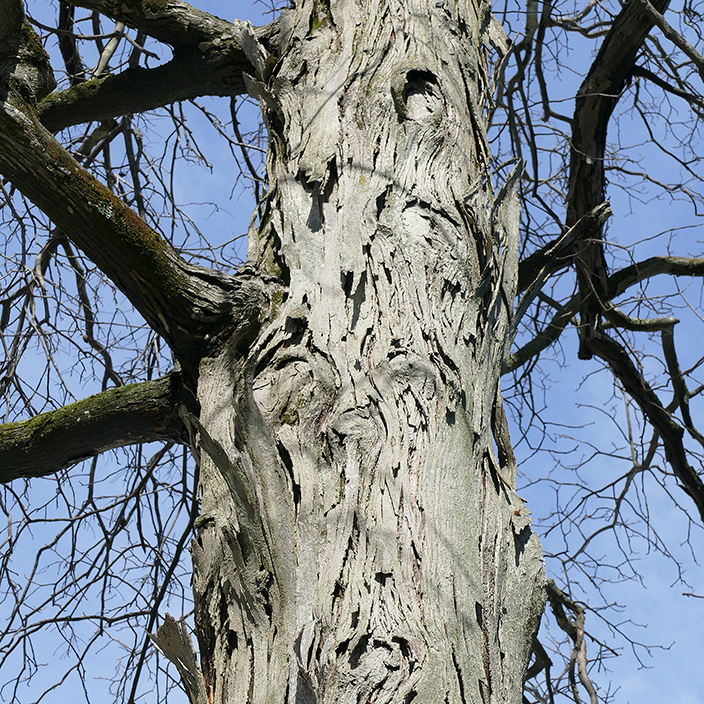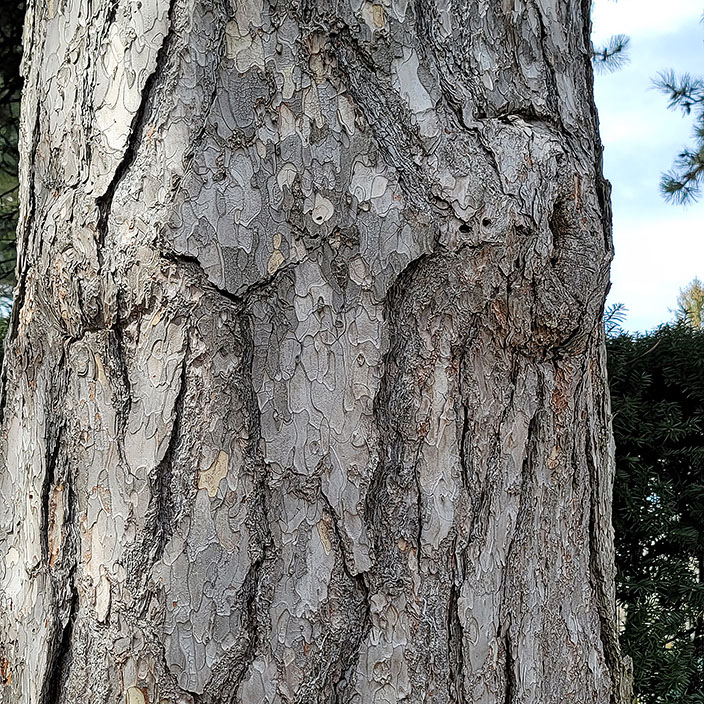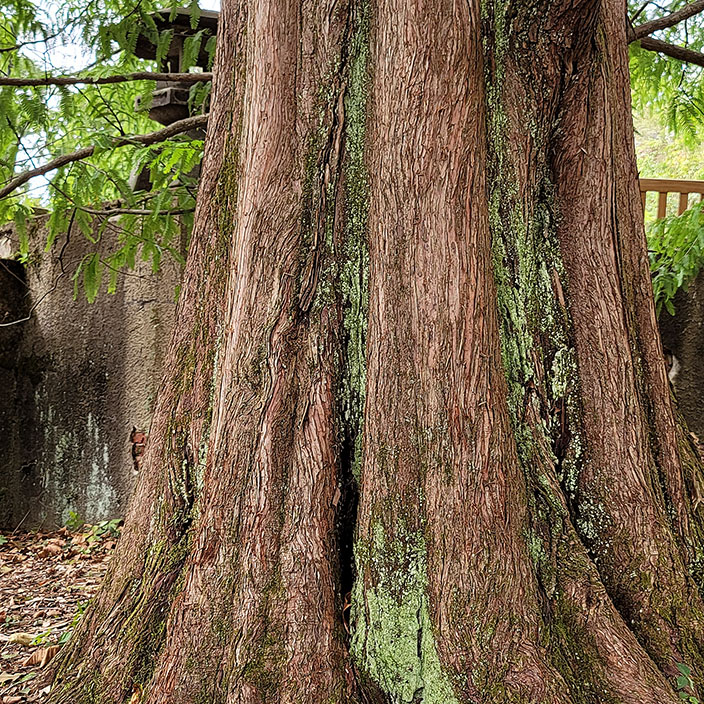A growing body of scientific research shows that spending time near trees enriches our lives both physically and emotionally. While trees clean pollutants from the very air we breathe, their year-round beauty can awaken our curiosity and prompt us to set aside modern-day concerns as we spend time enjoying the many facets of their beauty. Simply sitting near or walking among them reduces stress, lowers blood pressure, and improves mood. Even in winter, when there are no handsome leaves, flowers, or fruits to admire, we can discover the intricate, fascinating variety of colors and textures found in tree bark.
For example, the young branches on a cluster of Coral bark maple, Acer palmatum ‘Sango kaku,’ near the Cascade shine on a gray rainy day with their brilliantly colored branches (photo above). Often overlooked, tree bark adds textural interest and year-round beauty to the garden. Here are six more examples from our collection of life-enhancing trees that we hope will inspire you to seek and discover the remarkable variety of patterns and colors of tree bark you can find on your next visit to Greenwood.




